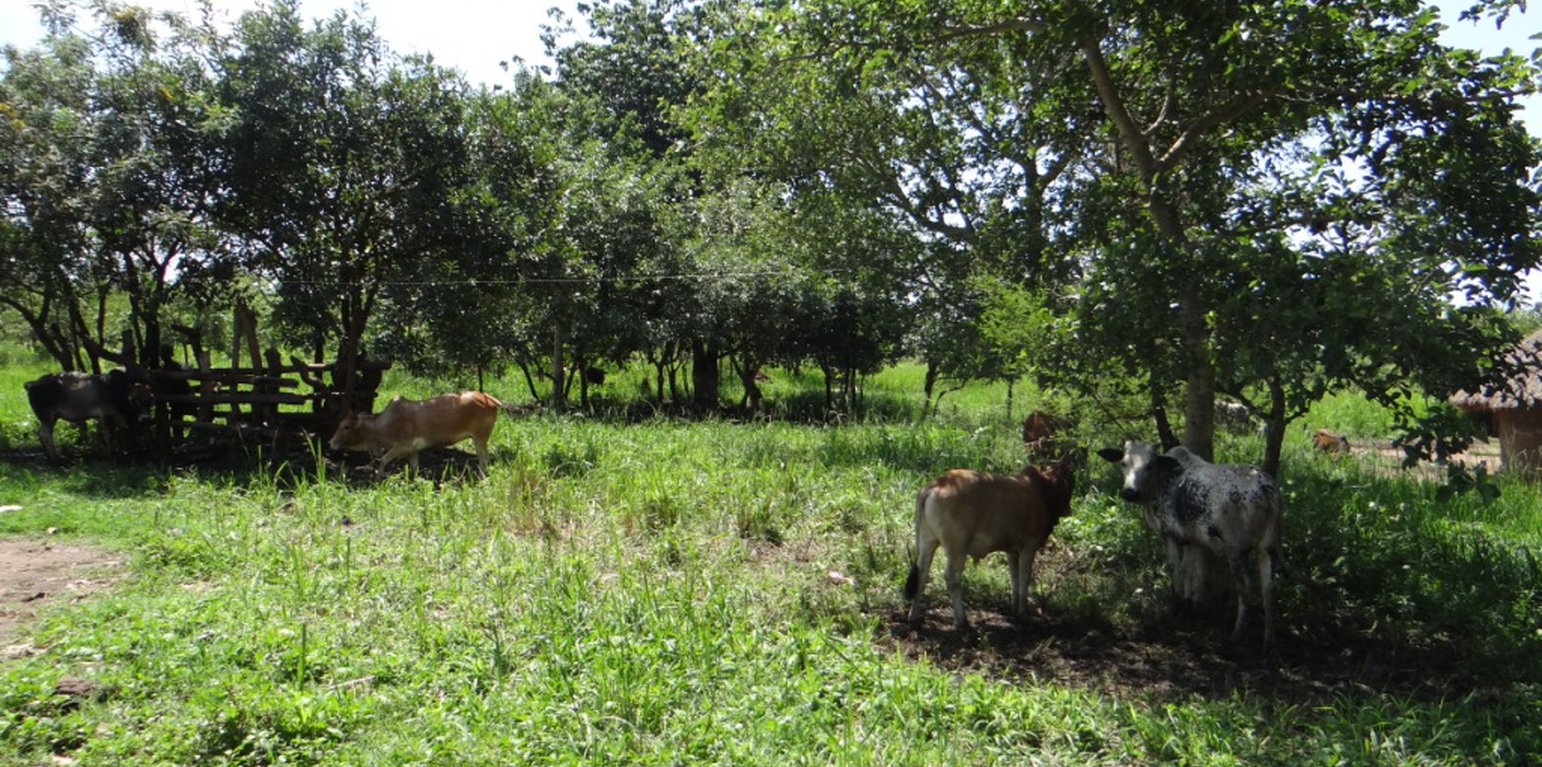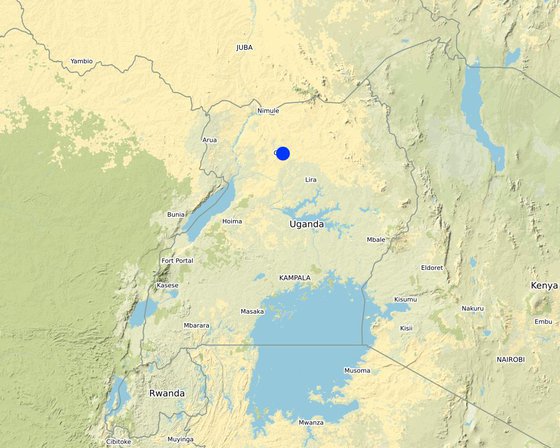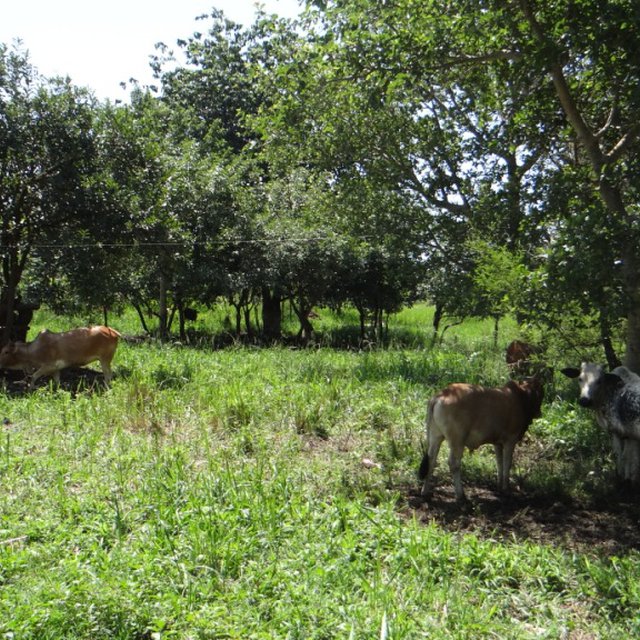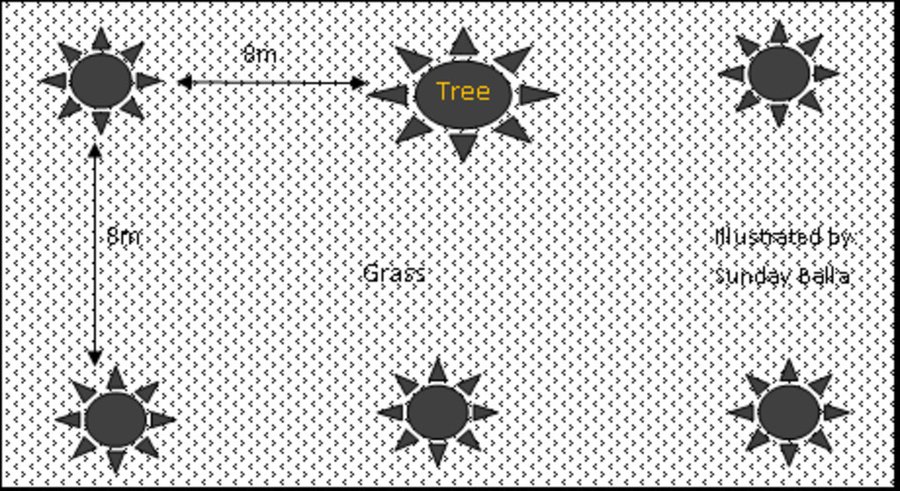



Livestock keepers in Northern Uganda face challenges of obtaining pasture for their animals due to land fragmentation, conflicts and bush burning. Cattle keepers in Nwoya District now plant multi-purpose trees to enrich the existing livestock pastures with the aim of increasing productivity per unit area of available land.
Multi-purpose tree seedlings, cuttings or seeds such as Calliandra calothyrsus are planted in natural pasture land at a spacing of about 8m x 8m. Depending on the shape of the trees, the spacing can be wider or narrower. The growing trees are caged during the first year of growth to prevent the animals from feeding on them and ensure proper establishment. In the following year after planting, trees can be used for feeding the livestock. In the first 3 years, the tree leaves can be cut and carried to the livestock as the trees are still tender and susceptible to overgrazing. Thereafter, trees can be directly browsed by the animals until a period when trees will have grown higher than the animals can reach; then again leaves are cut and carried to the livestock or pruned to a suitable height.
The trees produce nutritious leaves, among other products, used as livestock feed to supplement animal pasture. Furthermore, the trees provide shade for the animals during hot days. The leguminous trees bear vegetation rich in protein content, are evergreen and produce leaves throughout the year, hence, serve as an important source of feed during dry season when grass is dry or burnt. Animals produce good quality manure that can be used for improving soil fertility. The availability of leguminous trees in the pasture land also prevents overgrazing of the grass and therefore, incidences of soil erosion is minimized.

Location: Gulu District, Northern Region,Uganda, Uganda
No. of Technology sites analysed: 2-10 sites
Spread of the Technology: applied at specific points/ concentrated on a small area
Date of implementation: 2008
Type of introduction








Technical specifications
Author: Sunday Balla
Trees are planted at a spacing of about 8 m x 8 m in the grazing land on a gentle sloping area
|
|||||||||||
| Specify input | Unit | Quantity | Costs per Unit (Uganda shillings) | Total costs per input (Uganda shillings) | % of costs borne by land users |
| Labour | |||||
| Personnel | persondays | 4.0 | 5000.0 | 20000.0 | 100.0 |
| Equipment | |||||
| Hand hoe | pieces | 1.0 | 10000.0 | 10000.0 | 100.0 |
| Tape measure | pieces | 1.0 | 5000.0 | 5000.0 | 100.0 |
| Plant material | |||||
| Seeds | kg | 0.5 | 40000.0 | 20000.0 | 100.0 |
| Total costs for establishment of the Technology | 55'000.0 | ||||
Animal have enough feed
Leguminous multi-purpose tree leaves have high protein content
Quantity before SLM: 4
Quantity after SLM: 6
Trees branches used as firewood
Usually higher production
Reduced erosion and trampling
Quantity before SLM: 3litre/day
Quantity after SLM: 5litre/day
Higher milk production during peak of lactation.
The time / workload to activily graze animals is reduced due to the presence of trees
Increased milk production
Through increased consumption of milk
Farmers learned how to manage their land in a proper way
Institution of research and policy uses information from farmers about multi-purpose trees
Animals used to destroy other people's fields looking for pasture
Leaves act as mulch on the soil surface thus retaining water. Leaves increase humus thus increasing the water holding capacity of soil
Tree canopy and fallen leaves improves soil cover.
Reduced surface runoff which causes soil loss
soil surface is covered with decomposing leaves hence reduces sealing.
Reduced grazing reduces soil compaction by animals
Tree roots bring to surface leached nutrients
Tree leaves and roots decompose to add organic matter to soil
humus reduces soil acidity
Grass and trees presence increased
Trees are ever green even during dry periods when pasture are burnt or dried up
Trees act as wind breaks
Trees act as shade for livestock
Trees cover reduce surface runoff which carries pollutants such as animal dung into water sources. Leaves help filtering ground water.
Less livestock movement / trampling on neighbouting fields